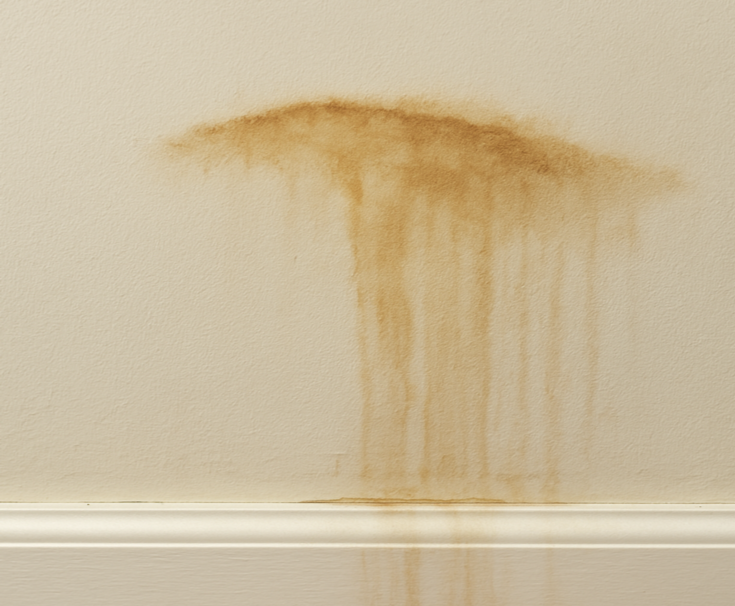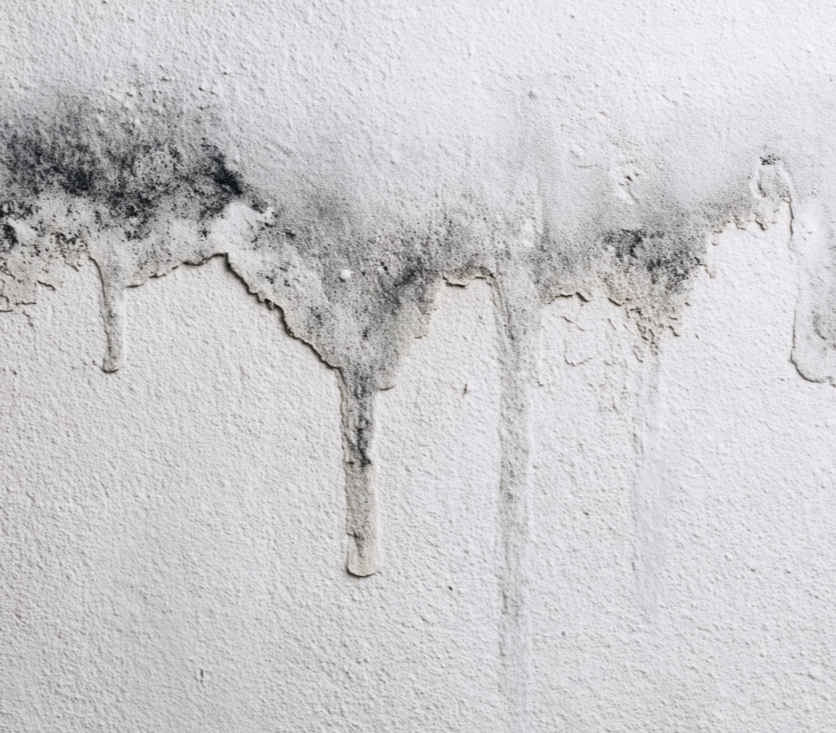Summary
This guide outlines five effective steps to fix water stains on walls, repair water damage, and prevent mold growth. It covers common causes like leaks and condensation, DIY repair methods using household items and tools, prevention strategies such as drying techniques and ventilation, and when to seek professional help. A personal story illustrates the risks of delay, including health hazards and high costs, emphasizing quick action. A dedicated section addresses water damage and mold removal options in Indianapolis, including local service company in Indianapolis.

Have You Ever Ignored a Small Water Stain or Water Marks on the Wall and Regretted It?
Picture this. Sarah, a busy mom in a suburban home, spotted a faint brown spot on her living room wall one rainy afternoon. It looked harmless, like a smudge from a spilled drink. She wiped it with a cloth, shrugged it off, and went back to her routine. Weeks passed, and the spot grew darker, spreading like a shadow. Then came the musty smell, subtle at first but soon overpowering. One day, her kids started coughing, and she noticed black specks dotting the area. Panic set in when she peeled back the paint, revealing soft, crumbling drywall underneath. Mold had taken hold, triggered by an unnoticed roof leak from a storm months earlier.
The pain was real. Sarah faced not just the hassle of disrupted daily life, with rooms cordoned off and furniture moved, but also mounting bills. A quick fix turned into a full remediation job costing over $2,000, plus doctor visits for her family’s allergies. The emotional toll hit hard too, feeling guilty for overlooking something so small that ballooned into a health risk. But here’s the lesson she learned, and one you can take to heart: water stains are warning signs, not decorations. Acting fast stops minor issues from becoming major disasters. By addressing the source, drying thoroughly, and preventing moisture buildup, you avoid mold’s grip and save money in the long run. Sarah now checks her walls regularly and shares her story to remind others that vigilance pays off.
In this guide, we’ll walk through five effective ways to handle water stains, repair damage, and keep mold at bay. We’ll keep it straightforward, like chatting with a helpful neighbor, focusing on practical answers you can use right away. Whether you’re dealing with a fresh stain or ongoing issues, these steps draw from reliable methods to get your walls back in shape.
What Causes Water Stains on Walls?

Water stains on walls often stem from hidden leaks or moisture buildup. Common culprits include roof leaks, where rainwater seeps through damaged shingles or flashing, dripping down to interior walls. Plumbing problems, like burst pipes or faulty fixtures, can also lead to stains, especially in bathrooms or kitchens where water lines run behind walls. Condensation is another frequent cause, particularly in humid areas or poorly insulated homes, where warm air meets cold surfaces and forms droplets that soak into the drywall. Clogged gutters or poor exterior drainage allow water to pool against the foundation, seeping inward and creating stains at the base of walls. Even HVAC issues, such as leaky ducts or overflowing drip pans, contribute by releasing moisture into wall cavities.
Hard water buildup in pipes can cause blockages, leading to overflows that stain walls over time. In older homes, salt contamination from rising damp can absorb atmospheric moisture, mimicking water stains. Spotting these early involves looking for yellowish or brownish rings, bubbling paint, or a warped texture. If you notice a musty odor or peeling wallpaper, it’s a red flag for deeper damage. Understanding the cause is key because fixing the symptom without addressing the root, like Sarah did initially, just invites recurrence. Start by inspecting your roof, pipes, and vents regularly to catch issues before they stain your walls.
How Do You Fix Water Stains on Walls? (Guide 1: Cleaning and Sealing Stains)
Fixing water stains starts with cleaning and sealing to restore the surface without major repairs. First, identify and stop the water source, whether it’s a leak or condensation, to prevent further damage. For minor stains, mix a solution of equal parts white vinegar and water in a spray bottle. Spray it on the stain, let it sit for 10 minutes, then wipe with a soft cloth. Vinegar breaks down mineral deposits and kills mild mold spores naturally. If the stain persists, try a mild dish soap and warm water mix, applying it gently to avoid scrubbing too hard and damaging the paint.
For tougher spots, use hydrogen peroxide on a cotton ball, dabbing carefully as it acts as a gentle bleach for organic stains. Once clean, apply a stain-blocking primer like an oil-based one to seal the area and prevent bleed-through. Repaint with matching color in thin layers, allowing each to dry. This method works best for surface-level stains; if the wall feels soft, you’ll need to move to repair steps. Always wear gloves and ventilate the room. This approach saved Sarah from worse issues once she acted, turning a visible eyesore into a seamless fix in under an hour.
Expand on safety: Test solutions on a small area first to avoid discoloration. For ceilings, use a stepladder securely. If stains return quickly, investigate deeper causes like hidden leaks. Tools needed include spray bottles, cloths, primer, and paint. This guide emphasizes simplicity, making it accessible for beginners while effective for lasting results.
How Do You Repair Water-Damaged Walls? (Guide 2: Patching and Restoring Drywall)
Repairing water-damaged walls involves cutting out affected areas and patching for structural integrity. Begin by assessing the damage: if the wall is bulging or crumbling, cut away the wet drywall with a utility knife, extending at least 12 inches beyond the stain to ensure dry material. Remove moldings or baseboards carefully for reuse. Dry the cavity thoroughly with fans or a dehumidifier for 24-48 hours to halt mold growth.
Cut a new drywall piece to fit, secure it with screws to studs, then tape seams with joint tape. Apply joint compound in thin layers, sanding between coats for smoothness. Prime with a water-resistant sealer, then paint. For plaster walls, scrape loose material, apply filler, and sand. This restores strength and appearance, preventing sagging or cracks.
Tips: Use mold-resistant drywall in humid areas. If insulation is wet, replace it to avoid energy loss. This repair took Sarah’s contractor a day, but DIY can save costs if you’re handy. Warnings: Wear a mask to avoid dust and mold spores. If damage spans large areas, consult pros to check for electrical hazards.
How Do You Prevent Mold After Water Damage? (Guide 3: Drying and Disinfecting Techniques)
Preventing mold after water damage requires rapid drying and disinfection. Act within 24-48 hours: remove standing water with towels or a wet vac, then use fans and dehumidifiers to reduce humidity below 60%. Open windows for ventilation, but avoid if outdoor humidity is high. Discard porous items like wet carpets that can’t dry fully.
Clean surfaces with a bleach-water mix (1 cup bleach per gallon of water), but only on non-porous areas; avoid on wood as it doesn’t penetrate deeply. For alternatives, use vinegar or commercial mold killers. Monitor with a moisture meter to ensure dryness. This stops mold spores from thriving in damp environments.
Long-term: Fix leaks, improve insulation, and use exhaust fans in bathrooms. Sarah’s mistake was delaying drying, leading to mold; quick action could have prevented it. This guide focuses on accessible methods, reducing health risks like respiratory issues.
What Tools and Materials Help with Water Damage Repairs? (Guide 4: Essential Supplies List)

Having the right tools and materials streamlines water damage repairs. Basics include a utility knife for cutting drywall, putty knife for applying compound, and sandpaper for smoothing. You’ll need joint compound, drywall tape, and patches for holes. For drying, grab fans, a dehumidifier, and moisture meter. Cleaning supplies: vinegar, bleach, dish soap, cloths, and gloves.
Paint tools: brushes, rollers, primer, and matching paint. Safety gear: masks, goggles, and drop cloths protect you and your space. Source from hardware stores; opt for mold-resistant products in prone areas. This setup empowers DIY fixes, as Sarah wished she had prepared earlier. Budget tip: Start with multipurpose items to avoid excess spending.
When Should You Call Professionals for Water Damage? (Guide 5: Knowing Your Limits)
Call professionals when damage is extensive or involves hazards. If stains cover large areas, indicate structural issues, or accompany electrical problems, experts ensure safety. Mold growth beyond small patches requires certified remediation to avoid health risks. Pros use industrial dryers and infrared cameras to detect hidden moisture.
Insurance often covers professional services, so document everything. Sarah called in help when mold spread, avoiding further complications. This guide helps you decide: DIY for minor fixes, pros for complex ones, saving time and preventing errors.
Water Damage and Mold Removal in Indianapolis
In Indianapolis, water damage and mold removal address local challenges like humid summers and winter pipe bursts. Common issues include basement flooding from heavy rains or sewer backups, leading to stains and mold. Indiana Mold Remediation specializes in testing and removal, with over 20 years’ experience. PuroClean provides comprehensive restoration, preventing secondary damage.
Call PuroClean Disaster Restoration now at (317) 467-4436 for fast, reliable service in Indianapolis.
With over 20 years of experience in water damage cleanup, drying, and property restoration, our certified team has helped countless Indianapolis homeowners and businesses recover quickly and prevent long-term damage.
We’re proud to have earned 100+ five-star reviews on Google, a testament to our commitment to quality, safety, and customer satisfaction.
Read our verified customer reviews here and see why Indianapolis trusts PuroClean for professional water damage restoration. In Indy, humidity control with dehumidifiers is crucial due to variable weather. Reviews on Google highlight top-rated companies like PuroClean Disaster Restoration for reliable work. Always choose BBB-accredited services for trustworthiness.
FAQs
Can water stains on walls go away on their own?
No, water stains typically worsen without intervention, as they signal ongoing moisture that can lead to mold or structural damage.
Is it safe to paint over water stains?
Only after sealing with a stain-blocking primer; otherwise, the stain may bleed through, and hidden damage could persist.
How long does it take for mold to grow after water damage?
Mold can start growing in 24-48 hours if areas remain damp, so dry promptly.
What household items remove water stains?
Vinegar-water mixes, dish soap, or hydrogen peroxide work well for light stains.
Do I need special paint for water-prone areas?
Yes, use mold-resistant or waterproof paint in bathrooms and basements.
How much does professional mold removal cost in Indianapolis?
Costs range from $500-$3,000 depending on extent; contact local services for quotes.
Can I handle mold removal myself?
For small areas under 10 square feet, yes, with proper safety; larger requires pros.
What signs indicate hidden water damage?
Musty smells, bubbling paint, or soft walls suggest issues behind the surface.
How do I prevent water stains in the future?
Regularly inspect roofs, pipes, and gutters, and maintain low indoor humidity.
Are there health risks from water-damaged walls?
Yes, mold can cause allergies, respiratory problems, or worse in sensitive individuals.
Conclusion
Tackling water stains, damage, and mold doesn’t have to overwhelm you. By following these five guides, from cleaning to professional calls, you’ll restore your walls effectively. Remember Sarah’s story: quick response turns potential crises into simple fixes. Stay proactive, and your home stays safe and dry.
